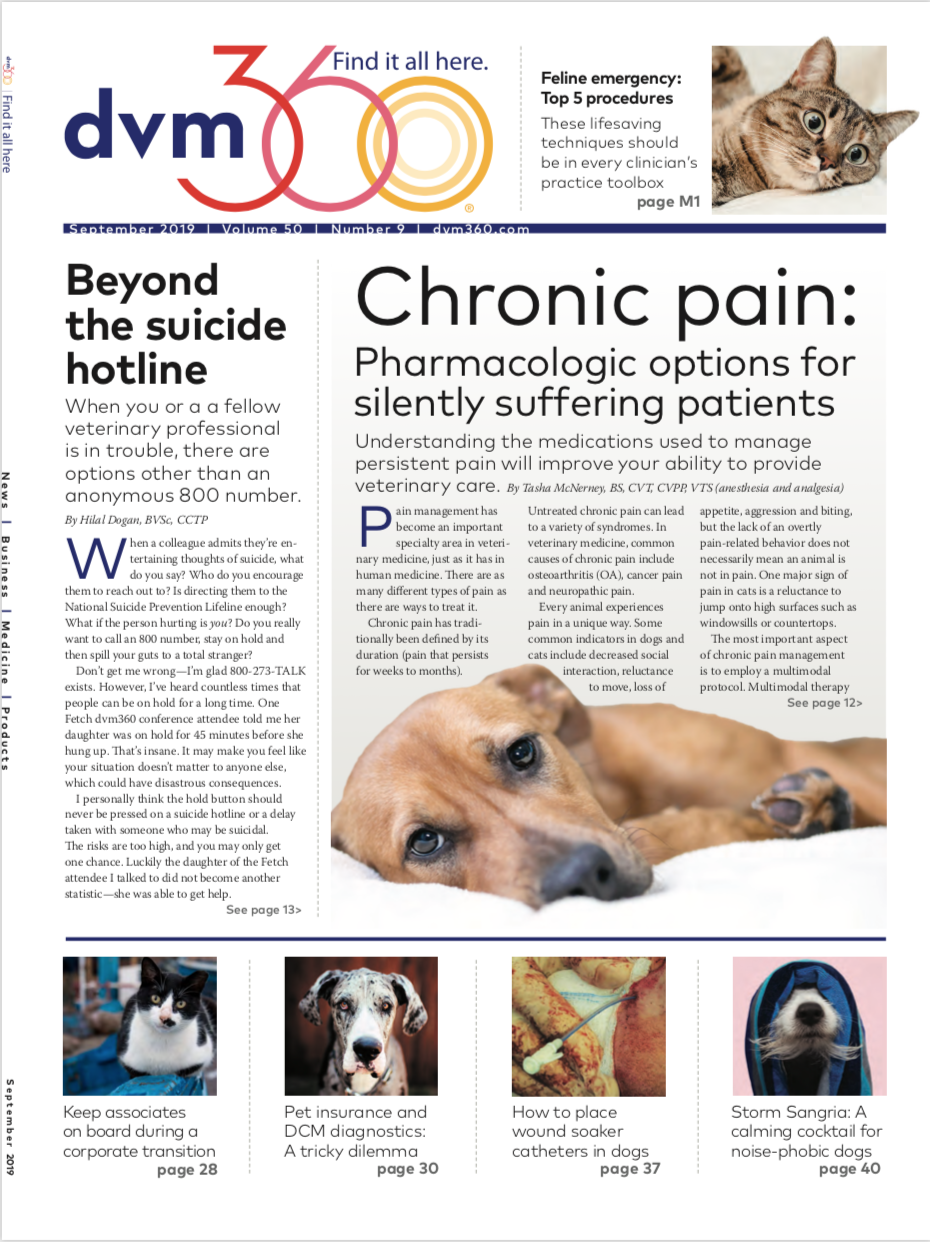Letter to dvm360: Better drug control helps
Making access to dangerous drugs a little more difficult is a short-term, but important, solution in preventing suicides in the veterinary profession.
jozefmicic/stock.adobe.com

Editor's note: This commentary is in response to “Dr. Andy Roark says ‘4 eyes' could save veterinarians' lives.”
I can tell you as someone who has had the conversation with dozens of suicidal veterinarians: Controlled drugs are often the plan. This statistic was also borne out in the Centers for Disease Control and Prevention's recent analysis of veterinary suicide as well as other literature in other countries. The sobering truth is that self-poisoning by euthanasia solution is either the first or second most common method of suicide in veterinarians depending on the study you read.1,2,3
But reducing access to means does not fix why the person is suicidal. It doesn't handle the circumstances that led them to suicidal thoughts and plans. What it does is give us time to address what's happening. The road to recovery is often long, and we need to keep a person physically safe while we address the reasons they got to that dark place to begin with.
That's why I think programs like the “4-eyes” campaign are so important. In this program, Dr. Andy Roark and his team are campaigning for us all to restrict access to controlled drugs unless two people are present. This isn't the whole solution, but it's part of it. This is a basic safety measure that many of us can put in place to help keep our colleagues safe while we seek to address some of the very real problems we face as a profession. No single program will be the solution, and that's absolutely true here. But you can't solve the problem if someone is dead.
I understand criticism of the campaign. This solution does nothing to reduce the suffering of someone with suicidal ideation, and it adds inconvenience to our already difficult and taxing jobs. Dr. Roark's solution doesn't address moral stress or overwork or cyberbullying or dozens of other things. It doesn't provide mental health care. But it does give us time to work on those things. And I want to assure you that there are many of us working on those other problems.
There are also places where Dr. Roark's solution will be tricky to implement-such as ambulatory practice or on-call situations. However, I think rather than disregard this program because it's not a universal salve, we're better served by brainstorming ways we can help reduce self-harm in ourselves and our coworkers. We shouldn't view the “4-eyes” campaign as a single solution, but rather a tool in a growing toolbox of programs that aim to address this crisis. I, for one, am inspired by Dr. Roark and commend him on trying to push for action in a difficult problem.
References
- Tomasi SE, Fechter-Leggett ED, Edwards NT, et al. Suicide among veterinarians in the United States from 1979 through 2015. J Am Vet Med Assoc 2019;254(1):104-12.
- Bartram DJ, Baldwin DS. Veterinary surgeons and suicide: a structured review of possible influences on increased risk. Vet Rec 2010;166:388-97.
- Platt B, Hawton K, Simkin S, et al. Systematic review of the prevalence of suicide in veterinary surgeons. Occupational Medicine 2010;60(6):436-46
Carrie Jurney, DVM, DACVIM (Neuro), CCFP, is vice president of Not One More Vet, an online veterinary support group and owns Jurney Veterinary Neurology, a Bay Area consulting service.
